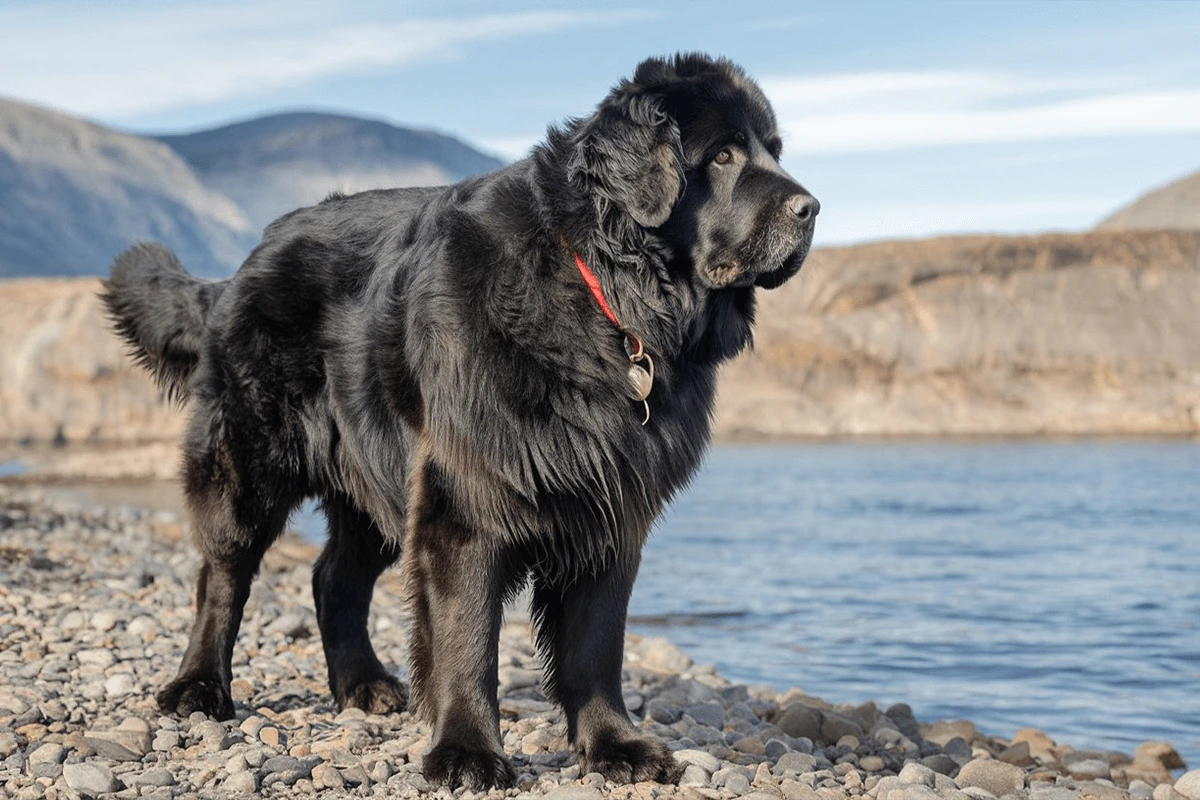The Newfoundland dog is a remarkable breed that captures the hearts of dog lovers worldwide. Known as “gentle giants,” these dogs are celebrated for their enormous size, calm temperament, and unwavering loyalty. With a history rooted in hard work and devotion, Newfoundland dogs were originally bred in Newfoundland, Canada, to assist fishermen by hauling nets, pulling carts, and performing daring water rescues. Their incredible swimming abilities, combined with their strength and instinct to save lives, have earned them a reputation as one of the best water rescue breeds in the world.
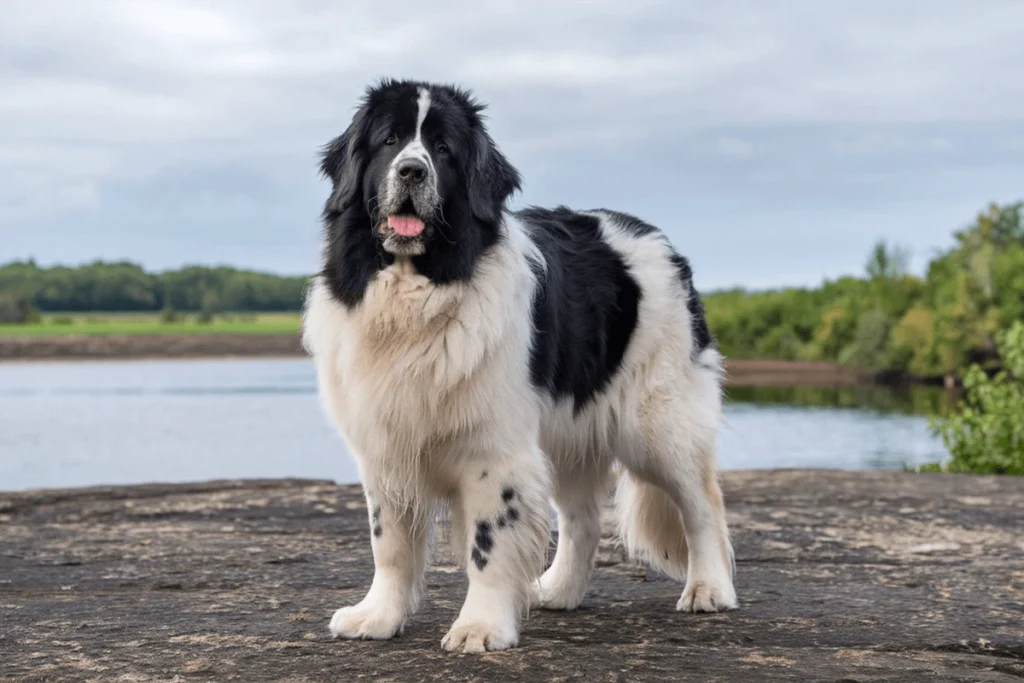
What sets Newfoundland dogs apart isn’t just their work ethic—it’s their personality. These dogs are known for their affectionate and gentle nature, making them an excellent choice for families, including those with children or other pets. Their friendly disposition and patience create a sense of security and companionship that few other breeds can match. Despite their massive size, Newfoundland dogs are often described as sweet-natured and approachable, thriving in homes where they can be actively involved in daily life.
Owning a Newfoundland dog,
comes with its share of rewards and responsibilities. Their thick, water-resistant coats require regular grooming, and their large size means they need plenty of space to move around comfortably. Proper training and socialization are crucial to ensure they grow into well-mannered companions, while their diet and exercise needs demand careful attention to keep them healthy and happy.
In this guide, we’ll delve into every aspect of the Newfoundland dog. From their fascinating history and unique characteristics to tips on grooming, training, and understanding their temperament, we’ll cover it all. Whether you’re thinking about bringing a Newfoundland dog into your life or simply want to learn more about these gentle giants, this comprehensive resource will provide all the information you need. Prepare to discover why the Newfoundland dog is not just a pet but a loyal and loving member of the family.
What Makes the Newfoundland dog Unique?
History and Origins of the Newfoundland dog
The Newfoundland dog has a storied history that dates back centuries. This breed is believed to have originated on the rugged shores of Newfoundland, Canada, where it was developed to assist fishermen in their daily tasks. Their ancestors likely included large, mastiff-like dogs brought to the island by European settlers, as well as native breeds. Over time, these dogs were selectively bred for their strength, endurance, and natural affinity for water.
Newfoundlands were indispensable to the fishing communities they served. They excelled in hauling heavy fishing nets, transporting supplies, and even pulling carts loaded with goods. However, it was their remarkable ability to rescue people from water that truly set them apart. Their dense, water-resistant coats and webbed feet made them natural swimmers, and their instinct to protect and save lives made them invaluable in emergencies.
The breed gained international recognition in the 18th and 19th centuries when explorers and settlers took Newfoundland dogs to Europe. They quickly became beloved for their unique combination of strength and gentleness, often earning a place in the households of nobility and royalty. Today, Newfoundland dogs are cherished not only for their historical contributions but also for their enduring role as loyal family pets and skilled working dogs.
Physical Characteristics and Appearance
The Newfoundland dog is a giant among breeds, known for its impressive size and striking appearance. Males typically weigh between 130 and 150 pounds, while females range from 100 to 120 pounds. Standing 26 to 28 inches tall at the shoulder, they command attention with their massive yet balanced build.
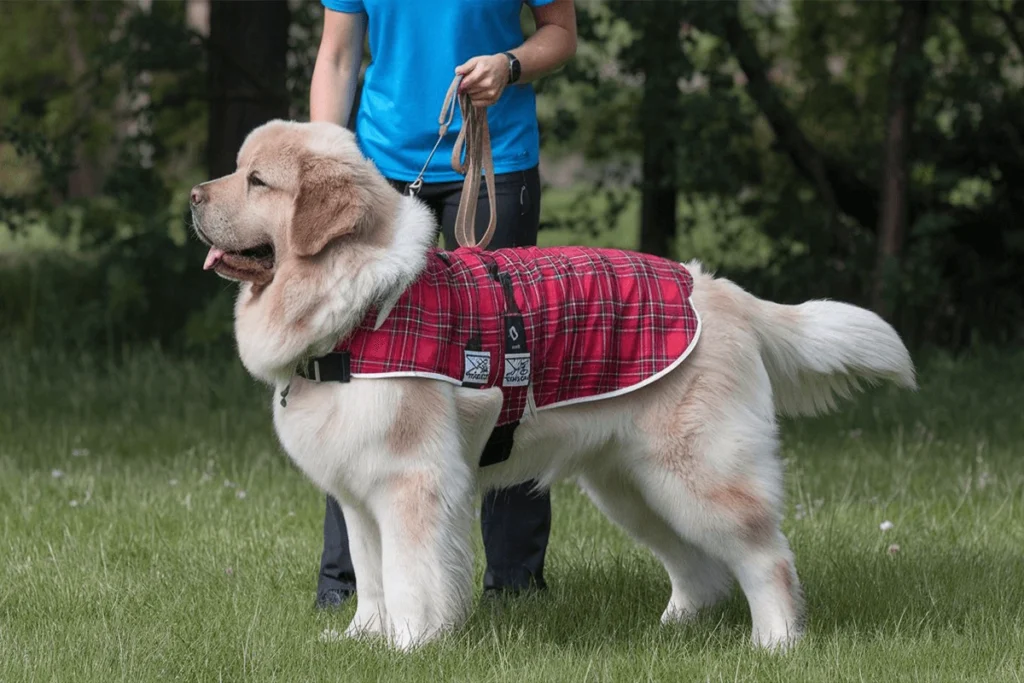
Their thick, double-layered coat is one of their defining features. The outer coat is coarse and water-resistant, protecting them from harsh weather and cold water, while the dense undercoat provides insulation. Newfoundland dogs come in a variety of colors, including black, brown, gray, and the striking black-and-white Landseer pattern. Regular grooming is essential to maintain their coat and reduce shedding.
These dogs have broad heads with a gentle expression that reflects their temperament. Their dark, almond-shaped eyes exude warmth and intelligence, while their small, pendant-shaped ears frame their face. The tail is long and bushy, aiding in balance and serving as a rudder when swimming. Their webbed feet are a unique trait, making them exceptional swimmers and enhancing their utility as water rescue dogs.
Newfoundland dog Personality Traits
The Newfoundland dog is often described as the epitome of a “gentle giant.” Despite their imposing size, these dogs are incredibly gentle, patient, and affectionate. They thrive on human companionship and are known for forming deep bonds with their families. Their calm demeanor makes them excellent pets for households with children, as they are tolerant and protective without being overly energetic or boisterous.
Newfoundlands are also highly intelligent and eager to please, which makes them relatively easy to train. They respond well to positive reinforcement and thrive in environments where they feel included. While their size can be intimidating, their natural friendliness usually wins over even the most hesitant visitors.
One of the most remarkable aspects of their personality is their instinct to help and protect. Whether it’s pulling a child out of a swimming pool or comforting a family member, Newfoundland dogs seem to have an innate sense of duty. This breed is often described as “heroic” for its life-saving instincts, but they are just as happy lounging by their owner’s side as they are performing daring rescues.
While they are generally well-mannered, early socialization and training are important to ensure they don’t develop unwanted behaviors. They are not overly active but require regular exercise to stay healthy and prevent boredom. Above all, Newfoundland dogs are loyal, loving companions who bring a sense of security and warmth to any home they join.
Caring for a Newfoundland dog
Grooming Needs
Caring for a Newfoundland dog’s coat is a commitment, but it’s essential for their health and appearance. These dogs have a thick, double-layered coat designed to protect them from cold temperatures and water. The outer coat is water-resistant, while the undercoat is soft and dense. Regular grooming helps prevent matting, reduces shedding, and keeps their coat in top condition.
Brush your Newfoundland dog at least three to four times a week using a slicker brush or an undercoat rake. This routine removes loose fur, prevents tangles, and distributes natural oils that keep their coat shiny. During shedding seasons in spring and fall, daily brushing becomes necessary to manage the extra fur.
Bathing a Newfoundland dog is another critical part of grooming. Their size and dense coat make this a task that requires preparation. Use a dog-safe shampoo, and thoroughly dry their coat after each bath to prevent skin issues caused by trapped moisture. Cutting nails, cleaning ears, and taking care of teeth should be included in their grooming routine. Keeping their ears clean is especially important, as their floppy ears can trap moisture and lead to infections.
By staying consistent with grooming, you not only maintain their beautiful coat but also strengthen your bond with your Newfoundland dog. Grooming sessions can be a time for relaxation and connection.
Exercise and Activity Requirements
Despite their large size, Newfoundland dogs are not overly energetic, but they still require regular exercise to stay healthy and happy. These dogs enjoy moderate activities that suit their natural abilities. Daily walks are essential to keep them physically fit and mentally stimulated. Aim for two 30-minute walks per day, adjusting based on your dog’s age, health, and energy level.
Swimming is one of the best exercises for Newfoundland dogs. Their webbed feet and natural affinity for water make them exceptional swimmers. If you have access to a safe body of water, let your Newfoundland dog swim regularly. Swimming not only keeps them fit but also provides a low-impact exercise that’s gentle on their joints.
Interactive play sessions, such as fetching toys or gentle tug-of-war, can also be enjoyable. Newfoundland dogs are intelligent and appreciate activities that challenge their minds. Incorporating puzzle toys or training sessions into their routine helps keep them mentally sharp.
Be cautious not to over-exercise young Newfoundland puppies, as their growing joints are delicate. Stay away from very intense activities, like jumping or running on hard ground, until they are completely grown. For adult dogs, maintain a consistent exercise routine to prevent obesity and support their overall well-being.
Diet and Nutrition
Feeding a Newfoundland dog a balanced diet is crucial for their health, energy, and longevity. These large dogs have specific nutritional needs that support their size and activity level. High-quality dog food, whether commercial or homemade, should be tailored to their life stage—puppy, adult, or senior.
For puppies, a diet formulated for large breed puppies is essential. These foods are designed to promote steady growth and prevent rapid weight gain, which can strain developing joints. Puppies typically need three to four meals per day, gradually transitioning to two meals as they mature.
Adult Newfoundland dogs thrive on a diet rich in protein, healthy fats, and complex carbohydrates. Look for food with real meat as the primary ingredient, supplemented with whole grains, vegetables, and essential vitamins. Monitor portion sizes carefully to avoid overfeeding, as obesity can lead to joint problems and other health issues.
Provide clean, fresh water at all times, as Newfoundland dogs can be prone to dehydration, especially during warmer months. Treats can be used for training and rewards, but they should make up no more than 10% of their daily caloric intake.
If you’re considering a homemade diet, consult with a veterinarian or canine nutritionist to ensure it meets your dog’s nutritional needs. Regular vet check-ups will help monitor your Newfoundland dog’s weight and overall health, allowing you to adjust their diet as needed.
By prioritizing proper nutrition, you’ll give your Newfoundland dog the foundation they need for a healthy, active, and happy life.
Training Your Newfoundland Dog
Early Socialization and Puppy Care
Early socialization is one of the most critical aspects of raising a well-adjusted Newfoundland puppy. The first few months of a puppy’s life are a window of opportunity to introduce them to the world around them in a positive and controlled manner. Proper socialization helps them grow into confident, friendly, and well-behaved adult dogs.
Start by exposing your Newfoundland puppy to a variety of environments, people, and other animals. Introduce them to different sounds, textures, and experiences, such as car rides, household appliances, and trips to the park. Ensure these interactions are positive, offering praise, treats, and reassurance to help them feel secure.
Sign your puppy up for a puppy school or a class where they can meet and play with other puppies. These structured settings provide a safe environment for your Newfoundland to interact with other puppies and learn basic commands. Classes also help establish a strong foundation for obedience and set the stage for lifelong learning.
Additionally, focus on handling exercises during this stage. Touch your puppy’s paws, ears, and mouth to get them accustomed to grooming and veterinary exams. This reduces stress for both you and your dog later in life. Be consistent with your routines, as Newfoundland puppies thrive on structure and predictability.
Patience is key during early socialization. Newfoundland puppies are naturally curious but may also be shy in new situations. Take it slow, and always prioritize their comfort and safety.
Positive Reinforcement Training Techniques
Newfoundland dogs are intelligent and eager to please, making them highly trainable with the right approach. Using rewards and praise is the best way to train this breed. By rewarding desired behaviors with praise, treats, or play, you encourage your Newfoundland to repeat those behaviors.
Start training as early as possible, focusing on basic commands such as “sit,” “stay,” “come,” and “down.” Keep training sessions short—10 to 15 minutes at a time—to maintain your puppy’s focus and prevent boredom. Use a cheerful and encouraging tone to create a positive learning environment.
Treats are a powerful motivator for Newfoundland dogs, but it’s important to use them wisely. Offer small, healthy treats as rewards and gradually transition to verbal praise or petting as your dog masters commands. This helps prevent over-reliance on treats and supports good behavior in all situations.
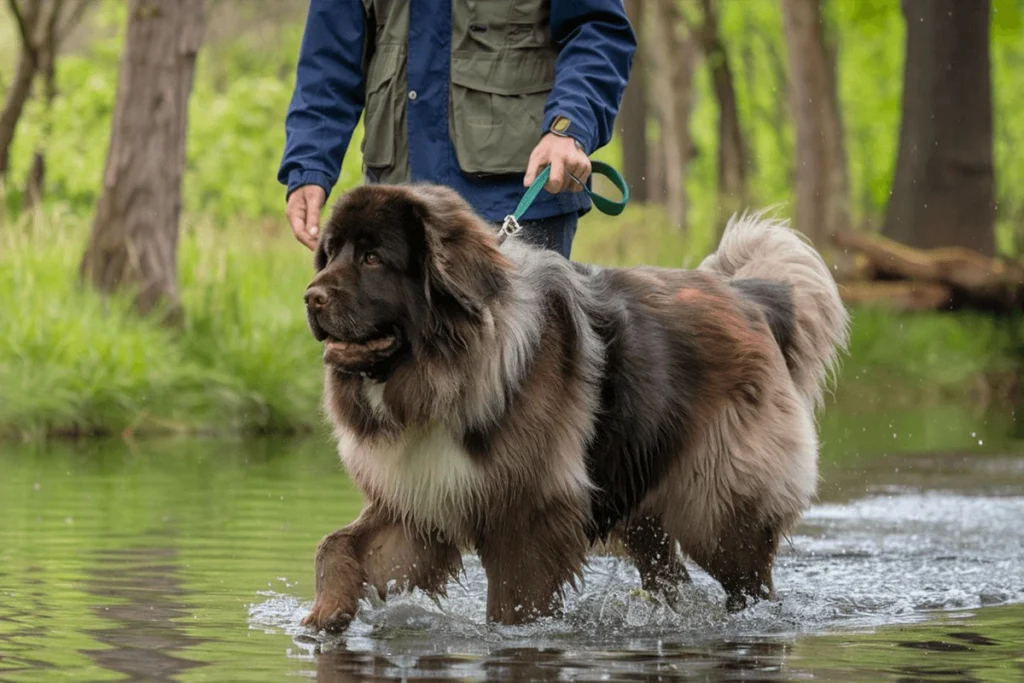
Consistency is crucial. Use the same words and gestures for each command, and ensure that everyone in the household follows the same training guidelines. Mixed messages can confuse your Newfoundland and slow their progress.
Positive reinforcement isn’t just for teaching commands—it’s also an effective way to address minor behavioral issues. Reward calm behavior, such as lying quietly or greeting visitors politely, to reinforce those actions. Avoid punishment, as it can lead to fear or anxiety in this gentle breed. Instead, redirect unwanted behaviors and reward appropriate alternatives.
Addressing Behavioral Issues
Like all dogs, Newfoundland dogs may develop behavioral challenges if their needs aren’t met or if training is inconsistent. Common issues include pulling on the leash, jumping on people, or barking for attention. Addressing these behaviors early is key to preventing them from becoming habits.
For leash pulling, use positive reinforcement to teach loose-leash walking. Stop moving forward whenever your Newfoundland pulls, and reward them when the leash is slack. This method teaches them that pulling won’t get them to their destination faster.
Jumping is often a sign of excitement or a bid for attention. Teach your Newfoundland to sit when greeting people, and only reward them with attention when all four paws are on the ground. Consistently reinforce this behavior to discourage jumping.
If barking becomes excessive, identify the cause. Newfoundland dogs are naturally protective, and they may bark to alert you to perceived threats. Teach a “quiet” command by rewarding silence with treats and praise. Ensure they have enough mental and physical stimulation, as boredom can also lead to barking.
Separation anxiety is another potential issue, as Newfoundland dogs form strong bonds with their families. Gradually accustom your dog to being alone by starting with short periods and slowly increasing the duration. Provide engaging toys or puzzles to keep them occupied, and avoid dramatic goodbyes or reunions.
Remember, patience and understanding are essential when addressing behavioral issues. Newfoundland dogs respond best to calm and consistent guidance. If a problem persists, consider consulting a professional trainer or behaviorist to develop a tailored plan for your dog.
Family Compatibility and Lifestyle
Newfoundland Dogs with Kids
Newfoundland dogs are often described as one of the best breeds for families with children. Their gentle temperament, patience, and protective instincts make them natural companions for kids. Known as “gentle giants,” they are tolerant of rough play and have an innate ability to sense the needs of children, often acting as a calm and steady presence in the home.
Newfoundlands are particularly affectionate with younger children. They are careful not to accidentally harm them despite their large size. However, supervision is still essential, especially with very small children, as the dog’s size and enthusiasm can sometimes lead to unintentional bumps or knocks. Teaching both the dog and children proper boundaries is important for a harmonious relationship.
These dogs are not only loving but also incredibly protective of the children in their family. They have a natural instinct to watch over and keep them safe, which is why they’ve earned a reputation as “nanny dogs.” Their willingness to be part of family activities makes them excellent playmates, while their calm demeanor helps balance the energy of a busy household.
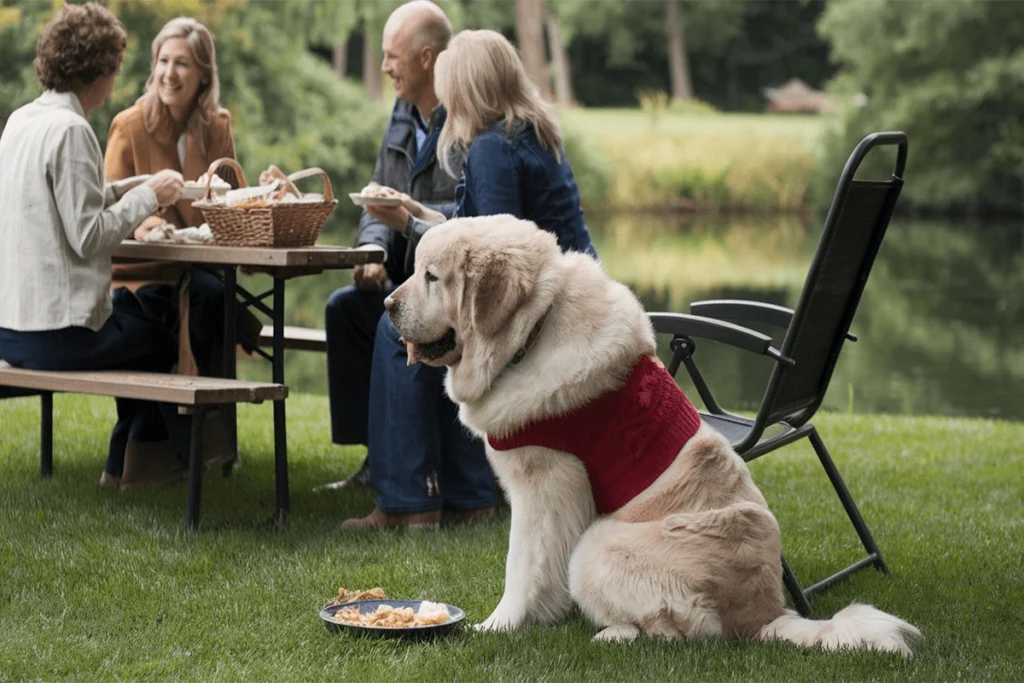
When introducing a Newfoundland to children, involve the whole family in training and care. This ensures that the dog views every member of the family as a trusted companion. By fostering this bond early, you’ll create a lifelong friendship between your Newfoundland and your kids.
Compatibility with Other Pets
Newfoundland dogs are known for their friendly and sociable nature, which extends to other animals in the household. They tend to get along well with other dogs, cats, and even smaller pets when properly introduced. Their calm demeanor and lack of aggression make them excellent companions in multi-pet homes.
When introducing a Newfoundland to other pets, take it slow and supervise the initial interactions. Allow them to sniff and explore each other in a neutral environment to prevent territorial behavior. Positive reinforcement, such as treats and praise, can help create a pleasant association between the Newfoundland and their new companion.
Newfoundlands are generally non-confrontational and prefer to avoid conflict. This makes them a great match for pets that may be shy or timid. However, their size and enthusiasm can be overwhelming for smaller animals, so ensure they interact respectfully. Training your Newfoundland to respond to commands like “gentle” or “leave it” can help manage their interactions.
For homes with cats, Newfoundlands usually adapt well, especially if they are raised together. Their calm personality makes them less likely to chase or harass cats, but introductions should still be gradual.
With proper socialization and guidance, Newfoundland dogs can coexist peacefully and happily with a variety of pets, adding even more harmony to your household.
Best Environments for Newfoundland Dogs
Newfoundland dogs are adaptable, but they thrive in environments that cater to their size, needs, and love for companionship. Ideally, they should live in homes with ample space. A large backyard where they can move freely is perfect, but they can also adapt to smaller spaces if they receive regular outdoor exercise and mental stimulation.
These dogs prefer cooler climates due to their thick double coat. They are prone to overheating in hot weather, so it’s crucial to provide them with shaded areas and access to fresh water during warm months. In extreme heat, keeping them indoors with air conditioning is recommended.
While Newfoundland dogs can live in urban settings, rural or suburban areas are often better suited to their needs. They enjoy open spaces where they can stretch their legs and explore. For city dwellers, nearby parks or walking trails can compensate for the lack of a yard, but owners must commit to regular outings.
Newfoundlands also need a home environment where they feel included. They do well when they are with people and can feel sad if they are left alone for a long time. Their strong attachment to their families means they need to be part of the daily routine, whether it’s relaxing at home or joining outdoor activities.
In homes with water access, Newfoundland dogs truly shine. Whether it’s a lake, beach, or pool, they love to swim and can exercise their natural instincts in the water. If you’re fortunate enough to provide this, it can enhance their happiness and well-being.
Ultimately, the best environment for a Newfoundland dog is one where they feel loved, included, and have their physical and emotional needs met. With proper care and attention, they can thrive in a variety of settings and bring immense joy to any household.
Health, Adoption, and Rescue Considerations
Common Health Issues in Newfoundland dog
Like many large dog breeds, Newfoundland dogs are prone to specific health issues that potential owners should be aware of. Understanding these conditions can help you provide the best care and ensure your Newfoundland leads a long, healthy life.
One of the most common health concerns in Newfoundlands is hip and elbow dysplasia, a genetic condition where the joints do not develop properly. This can lead to pain, arthritis, and mobility issues over time. Regular vet check-ups, a healthy diet, and controlled exercise can help manage this condition.
Heart issues, particularly subvalvular aortic stenosis (SAS), are another concern. This is a hereditary heart defect that can cause reduced blood flow from the heart. Responsible breeders screen for SAS, but regular veterinary heart screenings are essential throughout a Newfoundland’s life.
Newfoundlands are also prone to bloat or gastric torsion, a life-threatening condition where the stomach twists. This can occur suddenly and requires immediate veterinary attention. Feeding smaller, more frequent meals and avoiding vigorous activity around feeding times can reduce the risk.
Other health issues include cystinuria, a condition that can cause kidney or bladder stones, and eye problems such as cherry eye or entropion. Regular grooming and attention to their thick coat can also prevent skin infections or hot spots, which are common due to their dense fur.
While these health issues can seem daunting, proactive care, a balanced diet, regular exercise, and routine veterinary visits can significantly improve your Newfoundland dog’s quality of life and longevity.
Rescue and Adoption Options
Rescuing or adopting a Newfoundland dog is a wonderful way to bring one of these gentle giants into your life while giving a dog in need a loving home. Many Newfoundland dogs find themselves in rescue organizations due to changes in their owner’s circumstances, such as relocation or financial hardship, rather than behavioral issues.
Start your search with breed-specific rescue groups like the Newfoundland Club of America Rescue Network, which specializes in rehoming Newfoundlands. These organizations often have thorough screening processes to match dogs with the right families, ensuring a good fit. They also provide valuable insights into the dog’s temperament, health history, and specific needs.
Local animal shelters and general rescue organizations may also have Newfoundland dogs available for adoption. While it’s less common to find purebred Newfoundlands in general shelters, it’s worth exploring all options. Keep in mind that some dogs may be mixed with other breeds, which can still result in a wonderful companion.
Adopting a rescue Newfoundland requires patience and understanding. Some rescue dogs may have experienced trauma or neglect, and they may need time to adjust to their new environment. Work with a trainer or behaviorist if necessary to ensure a smooth transition.
By choosing adoption, you’re not only gaining a loyal and loving pet but also making a positive impact on the life of a dog in need.
Is a Newfoundland dog Right for You?
Deciding whether a Newfoundland dog is the right fit for your family is an important step. These dogs bring immense love, loyalty, and companionship, but they also require significant time, space, and resources.
First, consider their size. Newfoundland dogs are one of the largest breeds, and their sheer size means they need ample living space. A house with a large yard is ideal, but even in smaller homes, a Newfoundland can thrive if they receive enough exercise and mental stimulation.
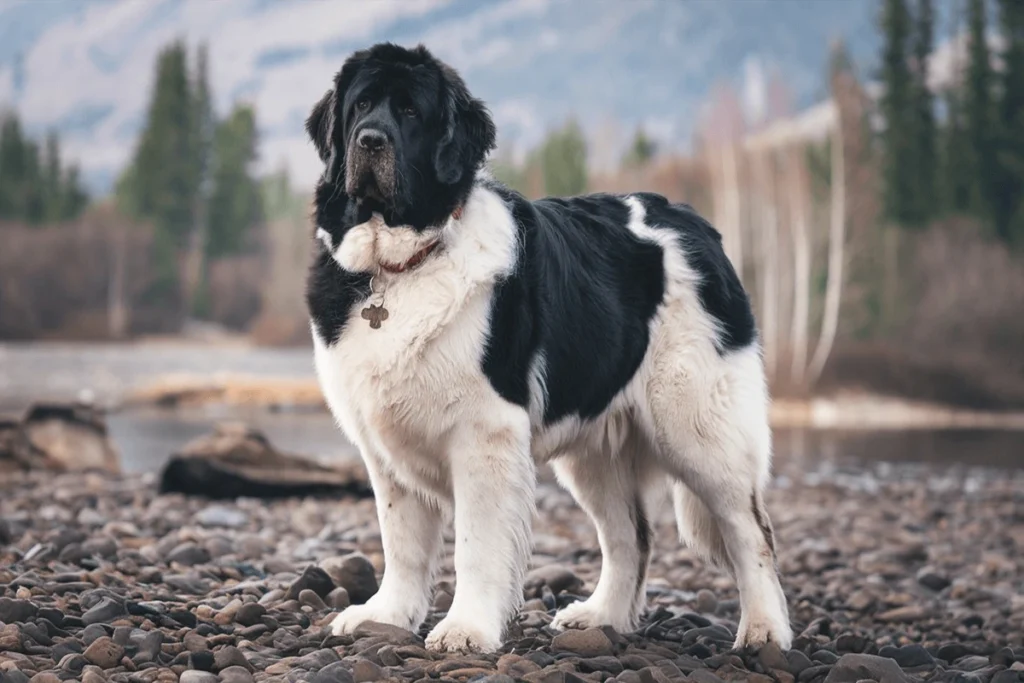
Next, think about their grooming needs. Their thick, double-layered coat requires regular brushing to prevent matting and reduce shedding. Grooming sessions can be time-intensive, so it’s important to factor this into your routine.
Newfoundland dogs are highly social and thrive on companionship. They are not suited to homes where they will be left alone for long periods. If you’re frequently away, this breed may not be the best choice unless you can arrange for someone to spend time with them during the day.
Financial considerations are also important. From food and grooming supplies to veterinary care, owning a Newfoundland dog can be costly. Ensure you’re prepared for these expenses, including potential health-related costs.
Finally, assess whether you can meet their exercise and training needs. While they are not overly energetic, they still require daily walks, mental stimulation, and opportunities to swim. Training should be consistent and based on positive reinforcement to ensure they grow into well-behaved companions.
If you’re looking for a dog that combines size, strength, and an incredibly gentle nature, the Newfoundland dog may be the perfect addition to your family. With the right environment, care, and commitment, these dogs can become loving, loyal members of your household.
you can learn more about these Giant breeds from: AKC Official
Conclusion
Newfoundland dogs are truly remarkable companions, combining a gentle temperament, loyal nature, and impressive strength. They are often referred to as “gentle giants” for good reason, as their loving and protective instincts make them an excellent choice for families, including those with children and other pets. From their rich history as working dogs to their modern role as beloved family members, Newfoundland dogs have captured the hearts of dog enthusiasts around the world.
However, owning a Newfoundland is a commitment that requires thoughtful consideration. Their size, grooming needs, exercise requirements, and potential health concerns mean they aren’t the right fit for every household. Prospective owners must be prepared to dedicate time, energy, and resources to ensure their Newfoundland thrives. Whether it’s regular grooming to maintain their beautiful coat, providing plenty of opportunities for swimming and exercise, or giving them the companionship they crave, caring for a Newfoundland is both a rewarding and ongoing responsibility.
Adopting or rescuing a Newfoundland can be an especially fulfilling experience. By opening your home to one of these incredible dogs, you’re not just gaining a pet—you’re welcoming a devoted family member who will provide unconditional love and joy. The bond you form with a Newfoundland is truly unique, as their affectionate and intuitive nature creates a connection that lasts a lifetime.
Ultimately, a Newfoundland dog is more than just a pet—they’re a loyal partner, a gentle protector, and a steadfast friend. For those willing to meet their needs, the rewards of sharing your life with a Newfoundland are immeasurable. With the right care, attention, and environment, these magnificent dogs will not only enrich your life but also become a cherished part of your family for years to come.
Discover More about Giant Breeds From Here!
